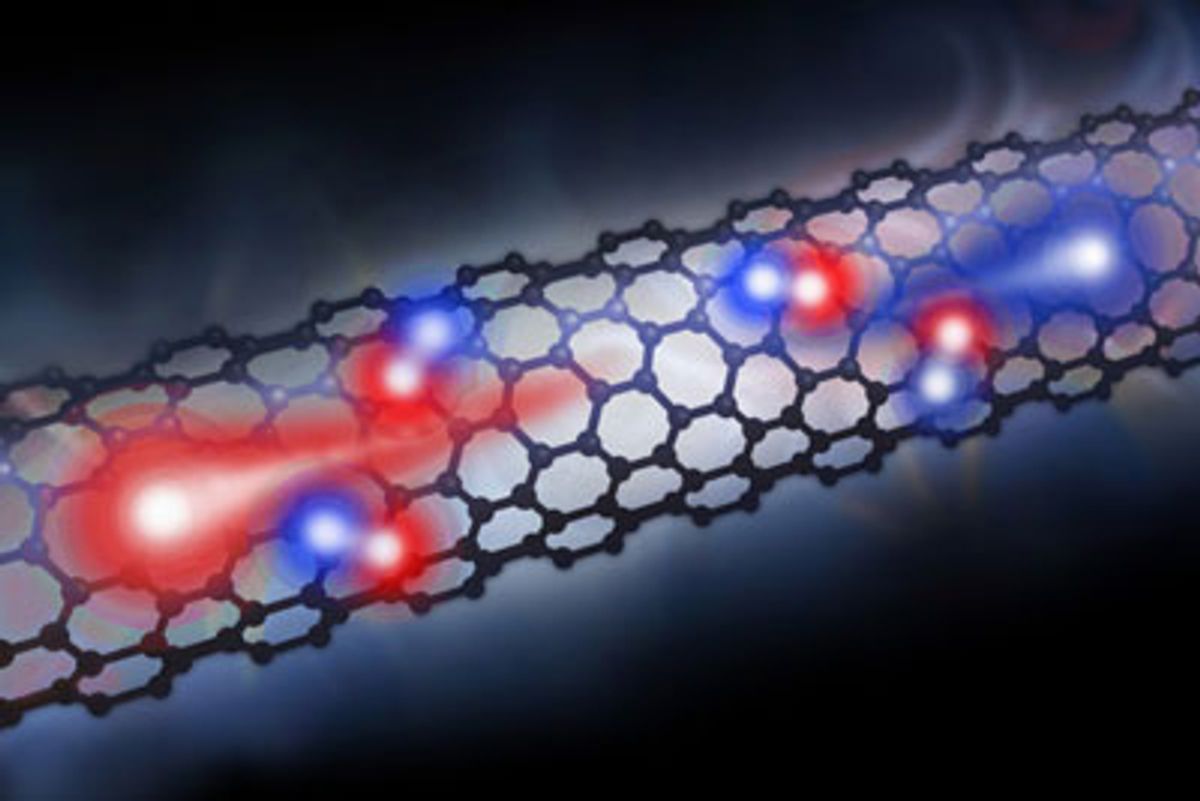I am impressed by the near daily news coming out of research labs around the world about scientists mixing one material with another on the nanoscale that could alter industries from electronics to medicine…someday…maybe.
I don’t typically comment about these experiments and results because it’s hard to know where to draw the line, and out of my own interest I have focused more on what is here and now.
But for some reason, which I still cannot totally account for, I was interested in this experiment at Cornell University with a carbon nanotube being used in the place of silicon as the basic element for converting light to energy for a solar cell.
But what I think got me about the news stories that covered this was Paul McEuen, the lead researcher, making a rather interesting appraisal of the work "We've made the world's smallest solar cell, and that's not necessarily a good thing," he is quoted as saying on the pages of the Next Big Future blog.
Or as McEuen’s grad student, Nathan Gabor, commented "What we've observed is that the physics is there." Now if you can engineer the scaling of the device to industrial levels, and, perhaps most importantly, get the capital to take on such an enterprise and then actually succeed in the marketplace which is set up to only let established technologies succeed then this gets really interesting.Dexter Johnson is a contributing editor at IEEE Spectrum, with a focus on nanotechnology.




